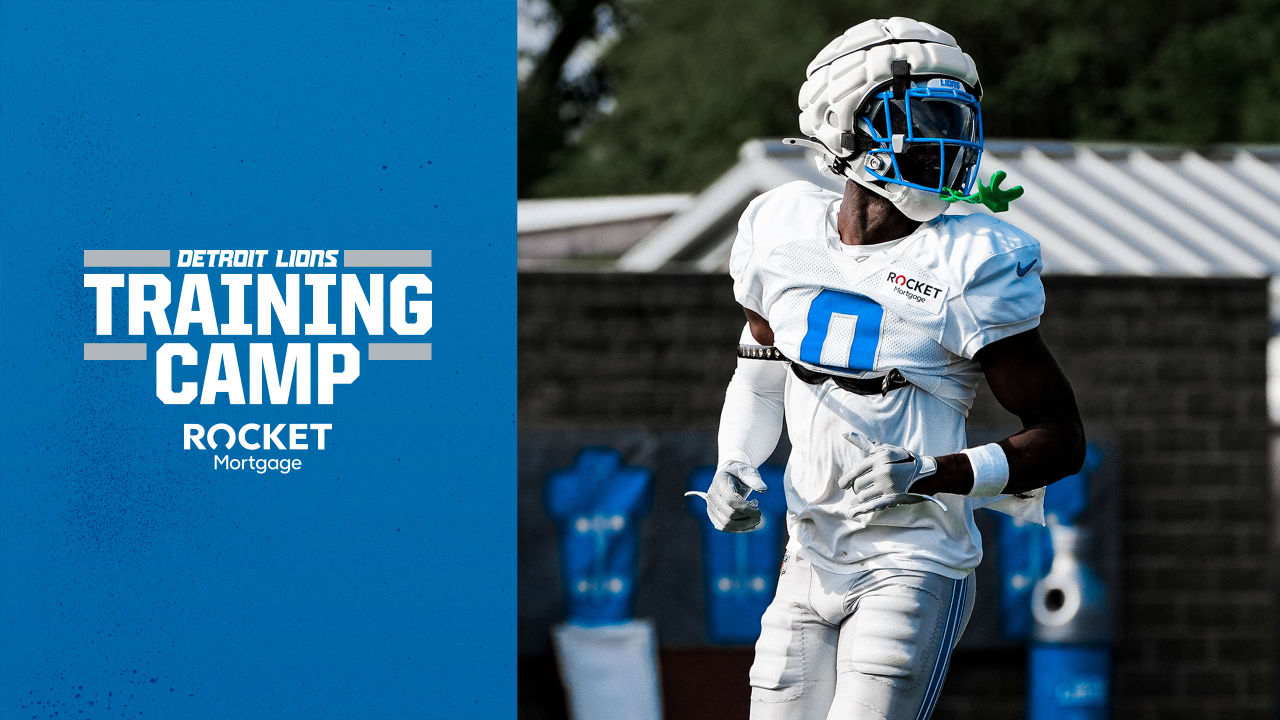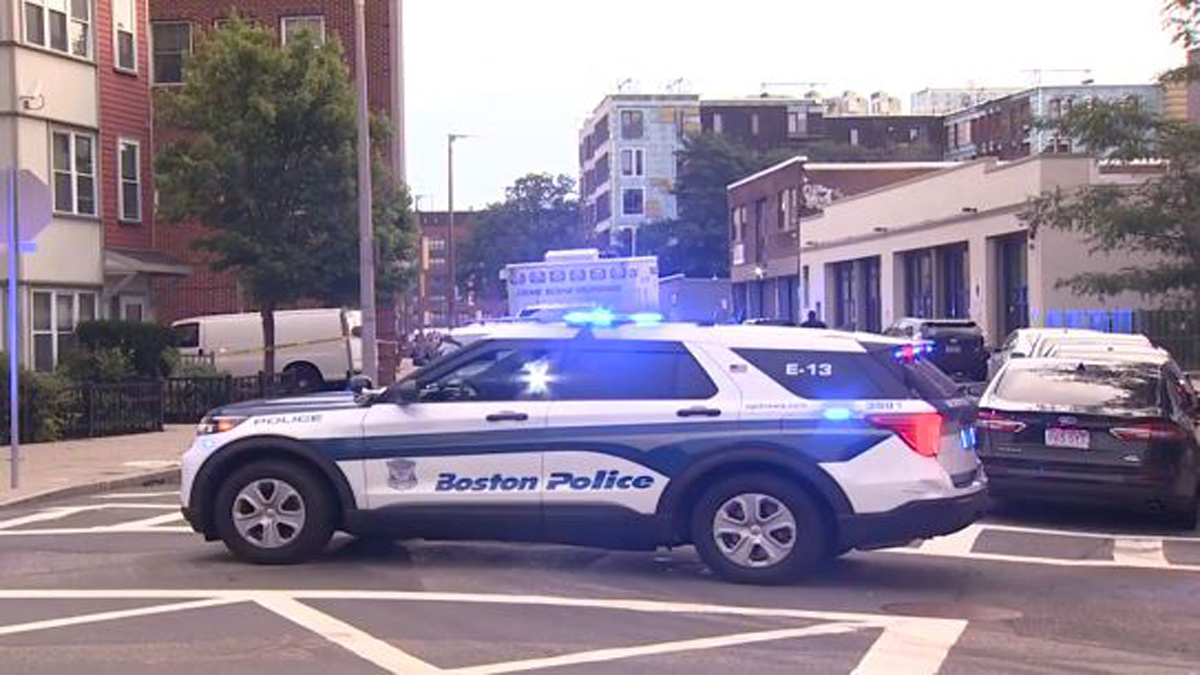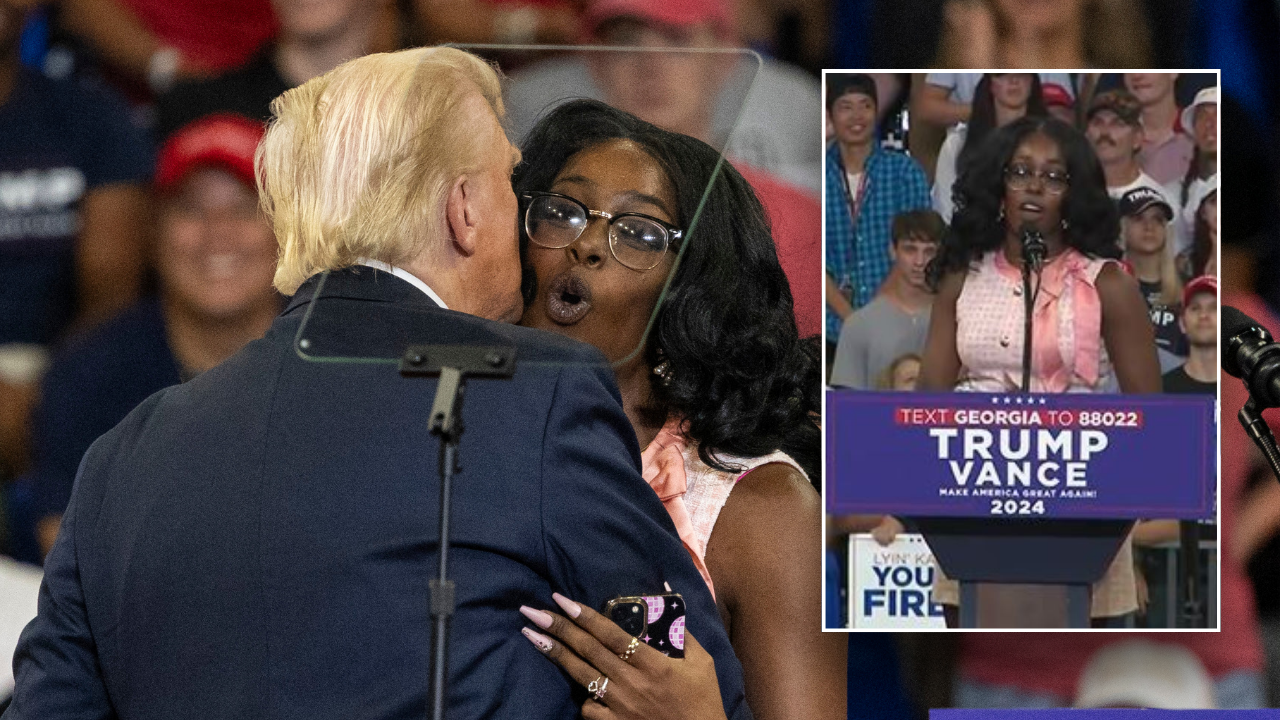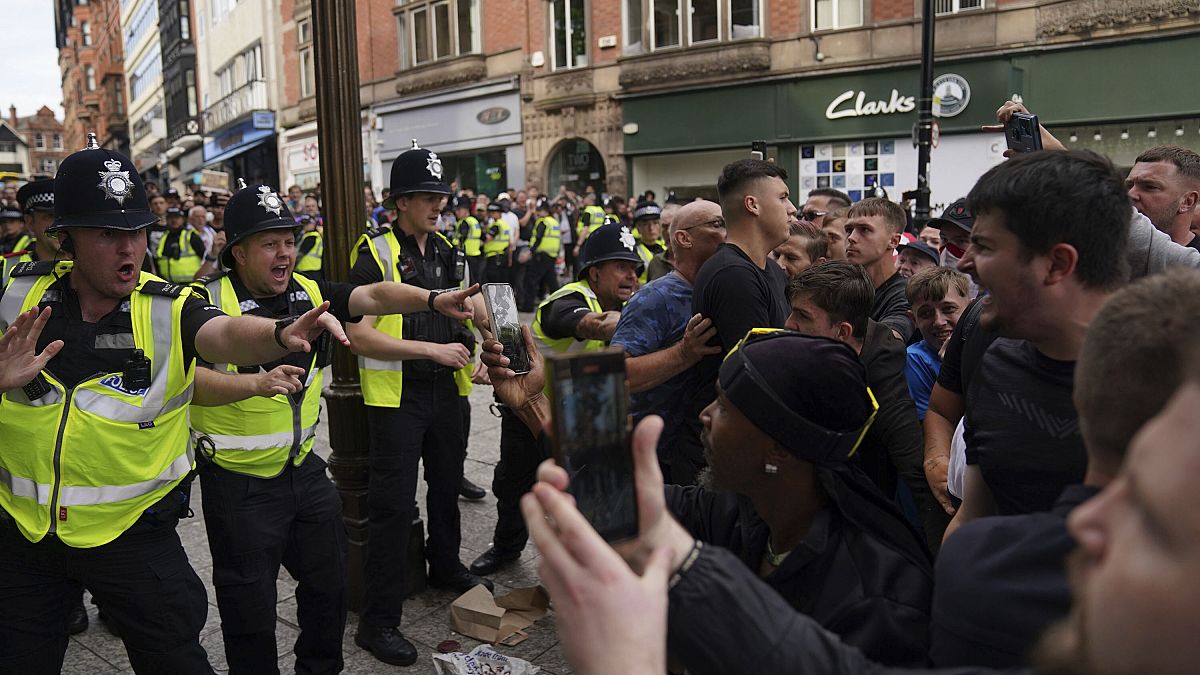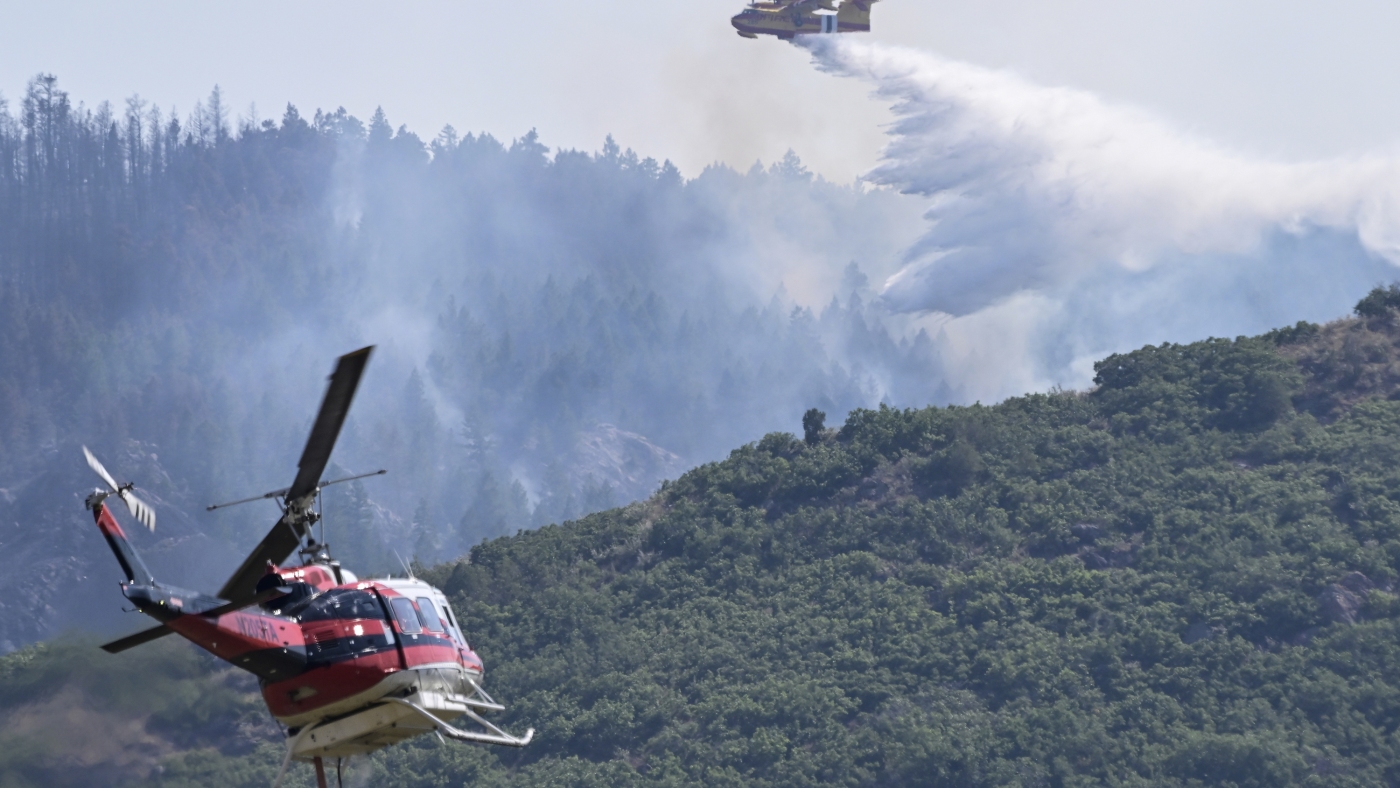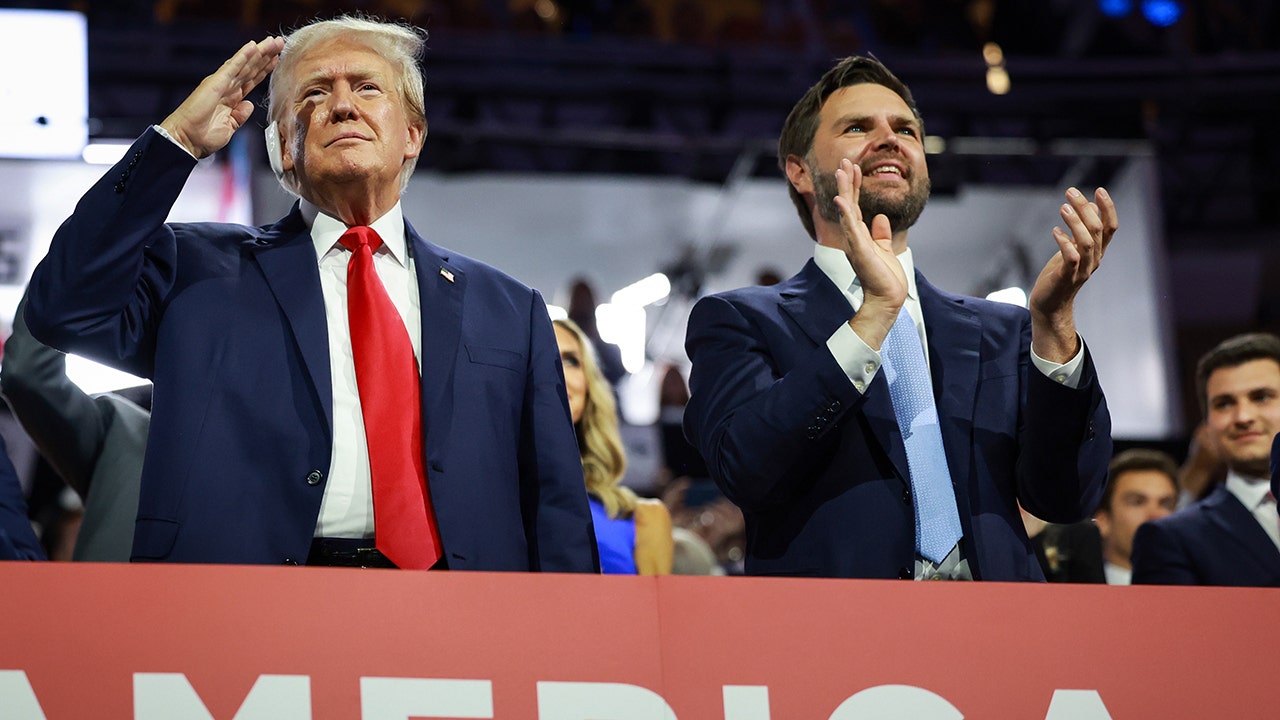Indianapolis, IN
Indy’s new clinician-led 911 response team hopes to save lives with therapy, not police

New program has clinicians in stead of police take some 911 calls
Peer Support Specialist Michael Lumpkin explains how the new Clinician-Led Response Team will respond to some emergencies instead of armed police.
Hali Tauxe, Indianapolis Star
The man was anxious, believing his apartment wasn’t safe. He called 911. The police responded at first, but realized there was no threat, so they called for the clinicians.
When Haleigh Rigger arrived, she knew from her years of experience as a mental health therapist and crisis worker that he was experiencing anxiety.
“Would you like me to go just peek into your apartment, just to make sure everything’s safe?” Rigger recalled asking him, as she recounted the incident about a month later. The man had said yes, unlocked the door and let Rigger in.
She looked around, and said, “I think everything looks okay, it looks like your apartment.”
“Oh my gosh, that’s amazing,” she recalled him responding. He opened up to her about the anxiety he’d been feeling, the increased substance use. “That was all he needed, was just a little bit of empathy and validation and a reminder to check in with his treatment team to help him manage those symptoms.”
In jeans, colorful tattoos, and bright purple hair, Rigger cuts a casual figure. She’s part of Indianapolis’ new, first-of-its-kind, 15-person clinician-led community response team operating downtown. Since the team kickstarted operations on July 1, they’ve been working in four shifts to respond to 911 calls to help people in mental health crisis without a police presence.
In a system where law enforcement traditionally responds to such calls, a growing number of people facing mental health crisis or addiction have ended up in handcuffs, in jail, or worse, a 2021 IndyStar investigation into jail deaths found.
An interaction between a police officer and a person in mental health crisis can turn deadly.
In April 2022, Herman Whitfield III died amid mental health crisis after being tased by Indianapolis police officers, who were later indicted. His death spurred calls from the community for the city to take police out of the equation when responding to people suffering from mental illness. Last year, Mayor Joe Hogsett’s administration set aside $2 million in American Rescue Plan Act money to start the team.
Hogsett’s Republican challenger for mayor Jefferson Shreve said he supports the city funding the team, but that it’s underfunded.
“For a city with a budget of $1.5 billion, $2 million doesn’t seem like much,” Shreve said. “I would find a way to triple it.”
Medical professionals had been responding to 911 calls prior to the creation of the clinician-led team, but they were always accompanied by a police officer under IMPD’s Mobile Crisis Assistance Team which started in 2017. That team involves a licensed mental health clinician who responds to a scene alongside police officers and doesn’t operate 24/7, which community members criticized after Whitfield’s death.
This year, 13 of the calls made to the Mobile Crisis Assistance Team, or 1%, resulted in an arrest.
The 911 operators screen callers based on a list of criteria that includes whether they have a weapon. Once it is determined a clinician, not law enforcement, should respond, they radio the team of clinicians who kick into action.
Responding to a mental health crisis
Three people form one team: a therapist, like Rigger, a peer support specialist, who is someone with lived experiences that can relate to the patient in crisis, and a program manager, who coordinates from team’s City-County Building basement headquarters.
If people experiencing mental health crisis end up any place aside from a mental health facility, they’re not getting the help that they need, Allison Robertson, a program manager, told IndyStar.
“We want these people to continue being productive members of society,” she said, “and in order for them to do that they need to get the help they need in a facility or outpatient care.”
More: ‘Transparency and accountability’: Hogsett speaks out on 2 police shootings
Unlike the police, the clinicians are armed with only their words.
“We’ve had folks that sometimes it’s the worst day of their life that we get called out to,” Rigger said. “Seeing like a police car and a weapon and thinking, ‘Oh, am I going to be arrested?’ We can come in instead and just provide that support and reassure them, ‘You’re not in trouble just because you’re having mental health symptoms.’”
It’s been less than three months since the team started work. In that time, they’ve responded to more than 50 calls with an increasing number of calls since the launch date, according to the Office of Public Health and Safety. It is difficult to evaluate its success in such a short time. But Julie Bingham, deputy director of behavioral health at the office, which oversees the program, said at a budget hearing that it is already saving lives.
However, five fatal police shootings in the past two months have shocked and angered some in the community, casting a shadow over the clinician-led team’s early days of work. One man who was fatally shot by police on Aug. 27, Kendall Darnell Gilbert, was experiencing a mental health crisis. But he had been brandishing a machete and the clinician-led team never responds when there are weapons.
Goal is to run the team 24/7
The team is slated to receive $1 million in the proposed 2024 budget, bringing it into the city’s permanent operating budget after initially being funded by the one-time federal largesse. The money will expand the team from its current coverage area to the east district as well.
The goal is to run the program 24/7, which would require 36 staff, Andrea Brown, director of operations at Stepping Stones Therapy Center, which is contracted to operate the team, said.
Right now, the team operates from 10 a.m. to 8 p.m. daily, a fact which some have criticized, including Whitfield III’s mother, Gladys Whitfield.
“I don’t understand: what are people supposed to do outside of the hours that the mental health clinicians are available?” Whitfield said on Aug. 16 at the budget hearing for the Office of Public Health and Safety, which oversees the team. “I think it’s critical. Maybe our son’s life would have been not taken from us.”
Deputy Mayor Lauren Rodriguez said the goal is for the team to operate 24 hours a day, seven days a week, downtown by the end of the year.
The Indianapolis Metropolitan Police Department’s top leaders have voiced support for the team, including Chief Randal Taylor who said at IMPD’s budget hearing that law enforcement should be the last resort in issues related to mental health, not the first.
“This is a big issue that for many years has been thrown in the backs of law enforcement, which isn’t fair, but we’re moving toward the right way of handling individuals who need help,” Assistant Chief of Police Chris Bailey said at the budget hearing, in reference to mental health issues.
Only 20% of IMPD’s radio runs each day are related to actual law enforcement, Bailey said, while more than 80% are for issues such as mental health that aren’t built for law enforcement.
Providing options, not coercion, to mental health patients
Providing options, not coercion, is a guiding principle of the team’s work.
Michael Lumpkin, a peer support specialist on the team, knows first-hand how trauma can drive people into survival mode where they have to act the “tough guy”, he said. Before he overcame drug and alcohol addiction in 2019, he said, he’d feel like he had to carry a gun with him walking downtown.
Now, he leads with empathy. He fist bumps strangers and hands cold water bottles to unhoused neighbors downtown.
“Anytime you can limit that mental health patient’s interaction with the criminal justice system, that’s a win for us,” he said.
The team said their goal is to meet people where they are and respect their autonomy. If someone isn’t ready to go to rehab or see a therapist, or doesn’t want to, the team doesn’t force them to.
“Sometimes we might have to meet somebody several times before they decide that we are trustworthy,” Rigger said. “That’s good mental health care, letting the client be in the driver’s seat, and we’re just along for the journey.”
In August, the team responded to a call about a woman who arrived to receive treatment at a facility but had panicked at the last minute. They tried to encourage her but she decided she wasn’t interested and left, the team recalled.
“Knowing that we weren’t able to reach that person was really hard for us,” Rigger said. “We really wanted that person to get some help…and it just wasn’t time. She wasn’t ready for it.”
When the team arrives on scene, the goal is helping the person out of crisis. They conduct a range of mental health assessments, including the Behavioral Activity Rating Scale and the Columbia-Suicide Severity Rating Scale. They watch how agitated someone is, noticing if they’re clenching their fists, for instance, and scrutinize for signs of suicide ideation.
Over the next hour or two, they spend time counseling the person, trying to bring them back to their “baseline”, figuring out what they need to help them in the immediate term, and connecting them with services, anything from food pantries to homeless shelters to outpatient mental health treatment.
“Often there’s a precipitating factor for a mental health crisis,” Rigger said. “It’s not just a mental health crisis. There’s something going on that has exacerbated someone’s symptoms. So, getting to the root of, what are your needs today?”
The team isn’t set up for long-term case management, but hopes to be the gateway to recovery.
Sometimes that means a ride to a homeless shelter. Sometimes it means taking a walk and talking about the person’s problems. Each call is totally unique. On their second day on the job, they reunited an elderly woman who had dementia with her family. Her son, who was visiting from out-of-town, was overjoyed, Lumpkin recalled.
Community reaction is mixed
Reaction from the downtown business community has been mixed.
A downtown business owner, Tim Meek, said he was skeptical that clinicians would be able to manage the people suffering drug addiction and mental illness that he often sees on Wabash Alley, outside the building he owns, without a police officer present.
“A clinician by themselves, I don’t think will stand a chance,” he said.
That said, since the program launched, police have been called for back-up in less than 1% of calls that the clinicians responded to, according to the Office of Public Health and Safety.
Many are hopeful that the team could prevent fatal police interactions in the future.
Michele Taylor, a manager at QDOBA Mexican Eats on North Meridian Street, said the team was a good idea.
“That’s better,” Taylor said. “The last person that had a mental breakdown, he got killed by the police. Sometimes the police don’t listen.”
Contact IndyStar reporter Ko Lyn Cheang at kcheang@indystar.com or 317-903-7071. Follow her on Twitter: @kolyn_cheang.

Indianapolis, IN
BLQ+ Pride Fest: A celebration of Indy's Black LGBTQ+ community

INDIANAPOLIS — A celebration of Black LGBTQ+ pride was on full display on Monument Circle Saturday.
The BLQ+ Pride fest brought out hundreds of people as an opportunity to celebrate people of color who identify as LGBTQ+.
The celebration had vendors, queer health support organizations and entertainment.
WRTV
According to the Human Rights campaign, over 80 percent of black LGBTQ+ youth say they have experienced homophobia or transphobia in the black community.
Organizers hope the event serves as a reminder to queer people of color that they have a community in the city of Indianapolis.
WRTV

“Black pride is important because black LGBTQ people need safe spaces to feel loved and celebrated in the State of Indiana,” President of Indiana Pride of Color Belinda Drake said.
The Human Rights campaign also says that racism is an issue in the LGBTQ+ community.
Nearly 75 percent of black queer youth say they have experienced racism in the queer community.
Indiana Pride of Color is working to improve the quality of life for Indiana LGBTQ+ BIPOC communities.
Learn more about the Indiana Pride of Color organization, here.
WATCH | Organizations work to ‘break the stigma’ amid Mental Health Awareness Month
Breaking the stigma of mental health during Mental Health Awareness Month
Indianapolis, IN
BLQ+ Pride Summer Fest returns

INDIANAPOLIS (WISH) — After a five-year hiatus, the BLQ+ Pride Summer Fest event was held on Monument Circle on Saturday.
The event featured several shopping, entertainment, and eating opportunities.
“They are doing testing, we have food vendors, we have alcohol for the adults, we have folks who are selling merchandise,” said Belinda Drake, president of Indiana Pride of Color. “We have the ice cone shop for the kiddos, too.”
The day is created to honor and celebrate Black, Queer joy in the city and state overall.
One of the vendors who came out to sell items and celebrate alongside the community is Nakeya Harris, the owner of Meraki Mobile Boutique. Her shop carries women’s clothing items, with a specific focus on statement items with bright colors. She also carries jewelry and additional staples.
“I enjoy people expressing themselves and being free, so I wanted to be a part of that,” Harris said.
Local LifeJourney Church was also in attendance at the event. They aim to extend a safe space for worship to anyone interested.
“Today we are trying to reach out to communities of color and just say we have a welcoming space where people can come and be themselves
Though it is the first event of its kind since 2019, the Summer Fest is set to return to Monument Circle next year, and for many years to come.
Indianapolis, IN
Todd’s Take: Home Cooking? Indiana Needs To Clean Its Big Ten Tournament Plate In Indy
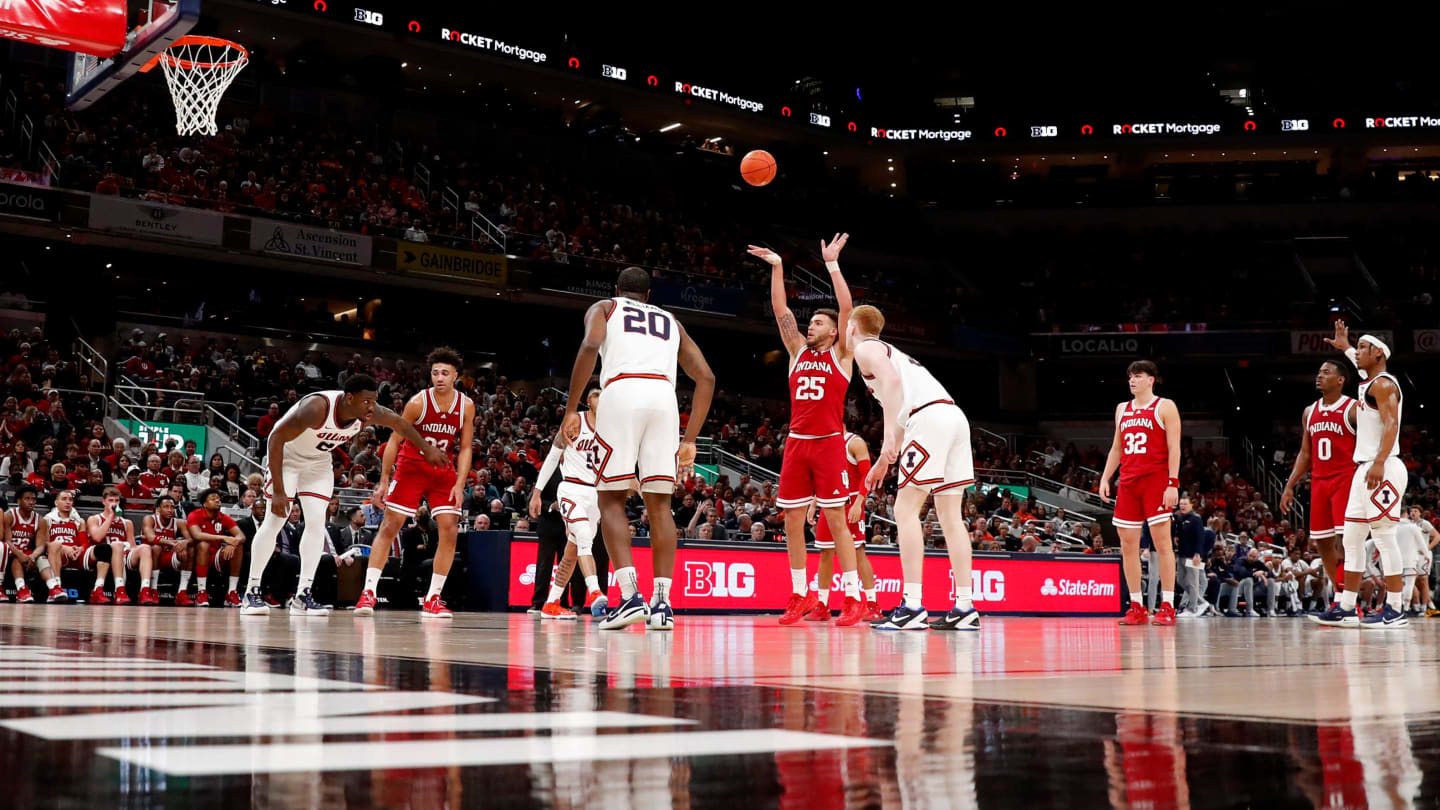
BLOOMINGTON, Ind. – On Wednesday, white smoke finally hovered over Big Ten headquarters in Rosemont, Ill., as the conference revealed its future plans for the Big Ten Men’s and Women’s Basketball Tournaments.
If you’re a Big Ten-mad basketball fan who resides in Indiana, you’re happy. Gainbridge Fieldhouse in Indianapolis will host both the men’s and women’s tournaments twice each between 2025 and 2028. The Fieldhouse will host both tournaments in 2025.
Spanning all 3 time zones across the Big Ten!
Here are the hosts for the 2025-2028 Men’s and Women’s Basketball Tournaments: https://t.co/lDiAEA5oVI#B1GMBBT l #B1GWBBT pic.twitter.com/clkRFmWP7O
— Big Ten Conference (@bigten) July 31, 2024
In theory, you’d think having the Big Ten Tournament right in the heart of Hoosier country would create a home-court advantage for the cream-and-crimson. You’d think that Fieldhouse moments would be part of the collective memories of candy-striped fans statewide.
But let’s partake in a short exercise. What is Indiana’s greatest Big Ten Tournament moment in the Circle City in men’s basketball? I’ll give you a moment to think about it.
That’s right, dig deep. Keep mining the recesses of your mind. Why do I hear crickets?
As I clear the cobwebs in my own head, in terms of good things that happened to Indiana in the Big Ten Tournament in Indy, I can only think of the 2022 run when the Hoosiers saved their NCAA Tournament bacon with a 2-1 performance.
Included were two of the three games Indiana has won by five points or less in Big Ten Tournament games played in Indianapolis – a five-point victory over Michigan and a two-point thriller against top-seeded Illinois. (The other was a 2006 five-point victory over Wisconsin.)
Past that? The cupboard is bare. There are infamous moments that jump to mind, such as former Hoosier Luke Recker’s heart-shattering buzzer-beater for Iowa in a 2002 semifinal in the first Big Ten Tournament played in Indy. Soon-to-be-outgoing coach Archie Miller was lustily booed in the tournament’s lone appearance at Lucas Oil Stadium in 2021.
There is infamy that had nothing to do with Indiana, such as the bizarre 2020 Big Ten Tournament game against Nebraska, where it seemed the entire nation seemingly coalesced during that game to the grim reality that COVID-19 was about to alter all of our lives.
Only in Indiana’s checkered Big Ten Tournament history could the Hoosiers win and not advance.
Past that, Indiana has largely entered and exited anonymously in the Circle City. The Hoosiers’ all-time Big Ten Tournament record in Indy is 7-11. Indiana has beaten a grand total of one ranked foe (No. 16 Illinois, 2022) among those seven victories.
The Hoosiers have had six one-and-done appearances at the Fieldhouse. Even if you exclude the 2008-10 post-probation period when the Hoosiers were mired in losing, that still leaves three other instances where cream-and-crimson tails were firmly planted between legs in front of the home folks.
The women don’t escape scrutiny, either. Indiana’s women have been better than the men – Heather Cassady and Jill Chapman led the Hoosiers to their lone Big Ten Tournament championship at the Fieldhouse in 2002. Teri Moren coached the 2022 team to the championship game at the Fieldhouse. But apart from that? Not much considering the women’s tournament has been played in Indianapolis far more often than the men’s tournament.
Indiana’s women are 19-24 all-time in the Big Ten Tournament in Indianapolis and have 12 one-and-done appearances.
None of this is for lack of enthusiasm at the gate. Every Indiana Big Ten Tournament game I’ve been to in Indianapolis has been a Hoosier Nation takeover. Indiana fans always show up, it’s what they do, but in Indy, it’s almost never reciprocated with on-court success.
So why does Indiana struggle in the Big Ten Tournament in Indy? Part of it is Indiana’s uneven seasons in general since the tournaments began in 1995 (women) and 1998 (men), but even good Hoosiers teams have stumbled in Indy.
The 2016 Big Ten regular season men’s champions are one example as they went one-and-out. Indiana’s 2021 Elite Eight women’s team didn’t win in Indy, either.
Where the men are concerned, perhaps part of it is historical indifference. Bob Knight was famously opposed to the tournament’s very existence and that attitude has possibly settled in among fans who recall his stance.
Truth be told, I don’t think I’ve heard many (any?) Indiana fans put an emphasis on the Big Ten Tournament, apart from seasons where the Hoosiers had to win to get a NCAA Tournament berth. The vibe is that this is a program that has bigger fish to fry, in particular, the elusive sixth banner.
Well, sometimes reality slaps you in the face with the truth that you have to walk before you can run. Indiana’s .395 winning percentage in the Big Ten Tournament is only ahead of Northwestern’s among schools that have been in the conference since the inception of the tournament. Let that wash over you.
That dubious distinction alone should spur Indiana fans into giving this tournament a bit more emotional emphasis, but there’s something to be said for the enthusiasm a tournament run generates, too.
I was there for the Purdue men’s win in 2023 in Chicago as well as the Iowa women’s and Illinois men’s wins in 2024 in Minneapolis. The Big Ten Tournament championship didn’t define any of their seasons, but it undoubtedly added some spice.
For the 2024-2025 season, Indiana’s men’s and women’s teams will both be capable of making noise at the Fieldhouse. The in-arena support will be there. Home cooking for the Hoosiers will be served up piping hot.
It’s long past time for the Hoosiers to clean their Big Ten Tournament plate in their home state.
-

 Mississippi5 days ago
Mississippi5 days agoMSU, Mississippi Academy of Sciences host summer symposium, USDA’s Tucker honored with Presidential Award
-

 Politics1 week ago
Politics1 week agoRepublicans say Schumer must act on voter proof of citizenship bill if Democrat 'really cares about democracy'
-
World6 days ago
More right wing with fewer women – a new Parliament compendium
-

 News1 week ago
News1 week agoVideo: Kamala Harris May Bring Out Trump’s Harshest Instincts
-

 Politics1 week ago
Politics1 week agoTrump announces to crowd he 'just took off the last bandage' at faith event after assassination attempt
-

 World1 week ago
World1 week agoIsrael says Hezbollah crossed ‘red line’, strikes deep inside Lebanon
-
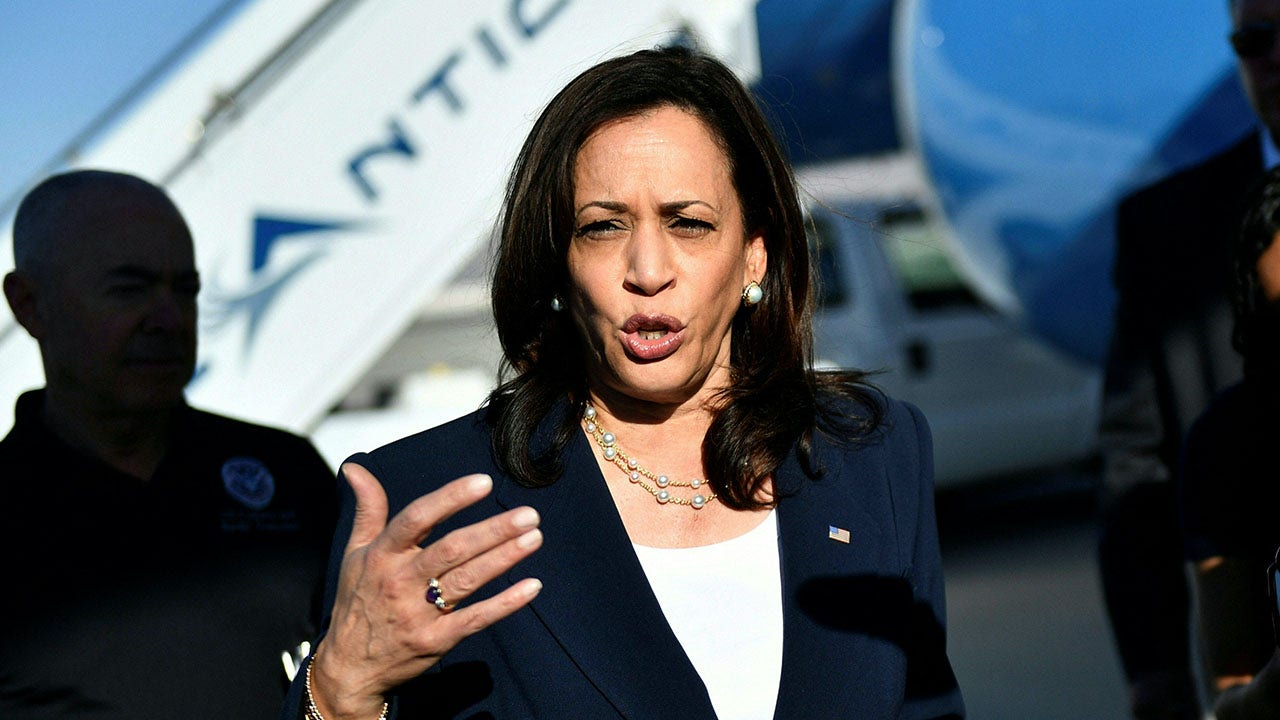
 Politics1 week ago
Politics1 week agoHarris failed to combat ‘root causes’ of illegal immigration, former Border Patrol union chief says
-

 Movie Reviews1 week ago
Movie Reviews1 week agoDeadpool & Wolverine Movie Review: Ryan Reynolds brings the house down in this bloody spectacle

